Dill Pickle Hot Sauce
This Dill Pickle Hot Sauce is a bold, tangy blend of briny pickles, fresh chilies, and aromatic herbs—designed for flavor lovers who crave something truly unique.
With layers of heat, acidity, and subtle sweetness, it balances fire with brightness in every drop. The fresh dill and garlic add earthy depth, while the pickle brine ties it all together with a familiar zing.
Whether drizzled on sandwiches, eggs, tacos, or grilled meats, this small-batch hot sauce brings a punch of personality and complexity that store-bought sauces simply can’t match.
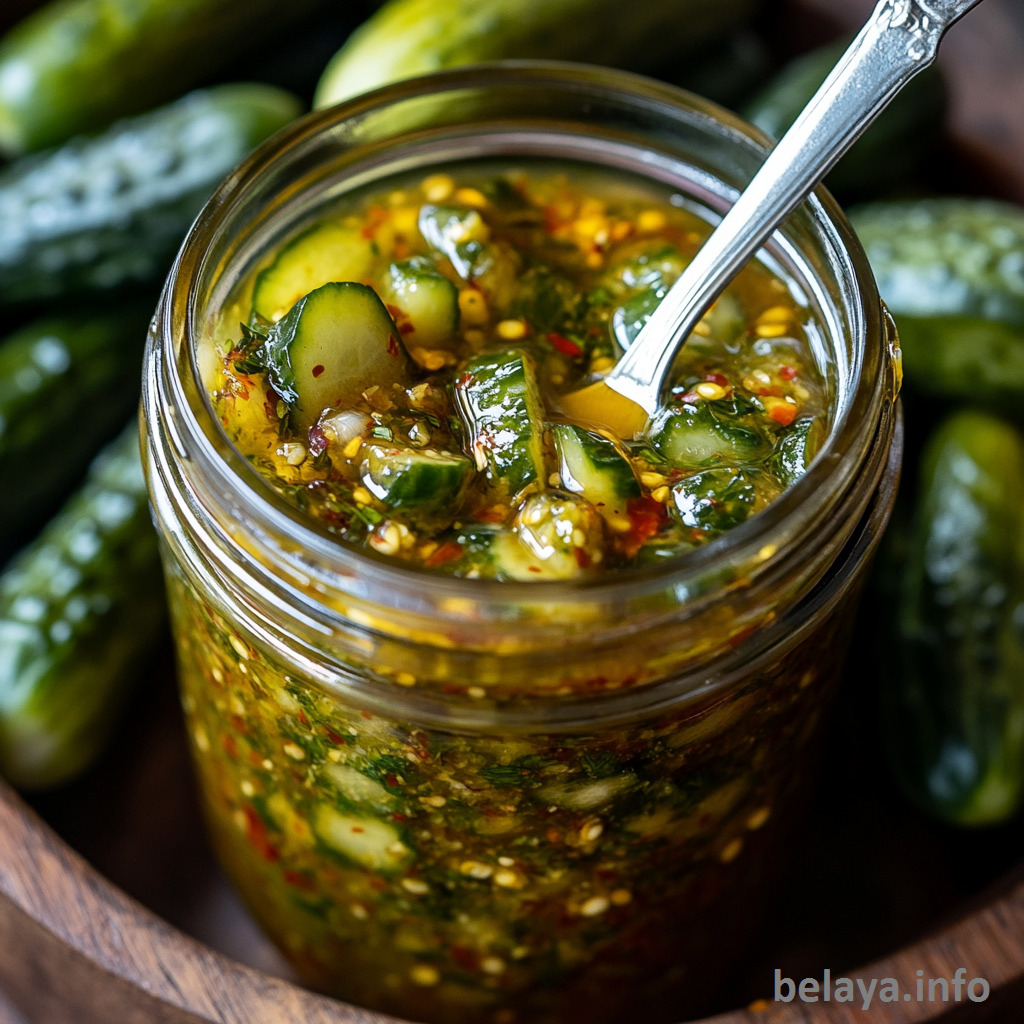
Why People Will Love This Dill Pickle Hot Sauce:
Unique flavor profile: It blends the tangy brightness of dill pickles with the fiery kick of jalapeños or serranos, creating a sauce that’s bold, refreshing, and unlike anything else on the shelf.
Balanced heat and acidity: The combination of vinegar, pickle brine, and just the right amount of chili creates a flavor that excites the palate without overwhelming it.
Fresh herbs and aromatics: Fresh dill and garlic provide layers of earthy, savory depth that elevate the sauce beyond simple spice.
Versatile and addictive: This hot sauce pairs well with everything from sandwiches and burgers to eggs, roasted vegetables, tacos, or even fried chicken—making it a go-to condiment you’ll keep reaching for.
Simple ingredients, homemade charm: Made with whole, recognizable ingredients and customizable heat levels, it delivers real flavor without artificial preservatives—perfect for food lovers who value both creativity and quality.
Surprisingly craveable: Even people who don’t usually love pickles or hot sauce find themselves hooked by its bold, bright, and balanced character.
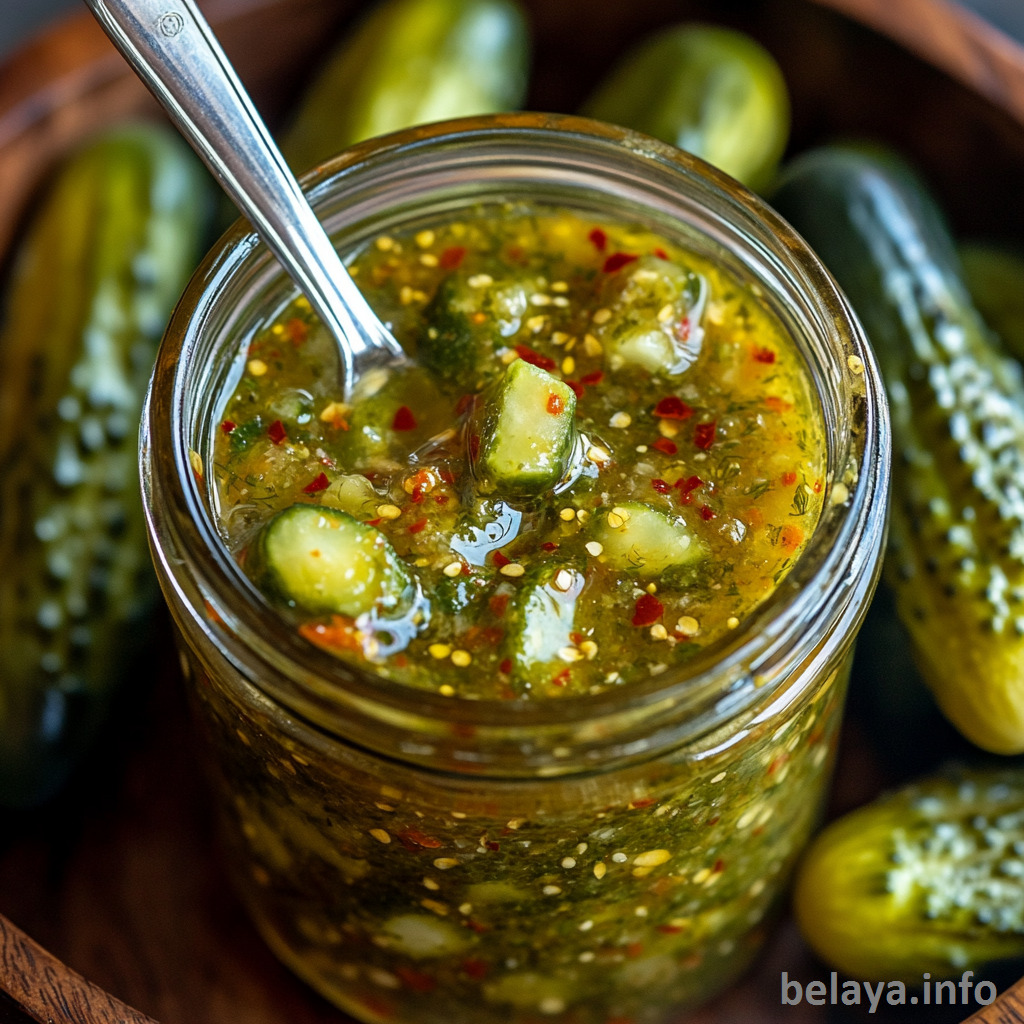
Key Ingredients:
Dill pickles bring a tangy, salty foundation with a signature briny sharpness that sets this sauce apart from traditional vinegar-based hot sauces. Their fermented depth adds complexity and craveability.
Fresh jalapeños or serrano peppers provide the heat, with grassy, green undertones that blend beautifully with the vinegar and herbs—allowing for both kick and flavor, not just burn.
Pickle brine or white vinegar delivers acidity, cutting through richness and enhancing the brightness of the other ingredients, while amplifying the tangy signature of the sauce.
Fresh dill infuses the sauce with a vibrant herbal aroma that rounds out the vinegar’s sharpness and complements the pickles’ profile with freshness and subtle bitterness.
Garlic and onion powder anchor the blend with warm, savory undertones that deepen the flavor and give it an all-purpose versatility.
A touch of sugar or honey (optional) helps mellow the acidity and creates balance, adding just a hint of sweetness without making the sauce taste sweet.
Olive oil or neutral oil gives the sauce body and richness, helping carry the flavor across the palate and creating a smooth, emulsified texture.
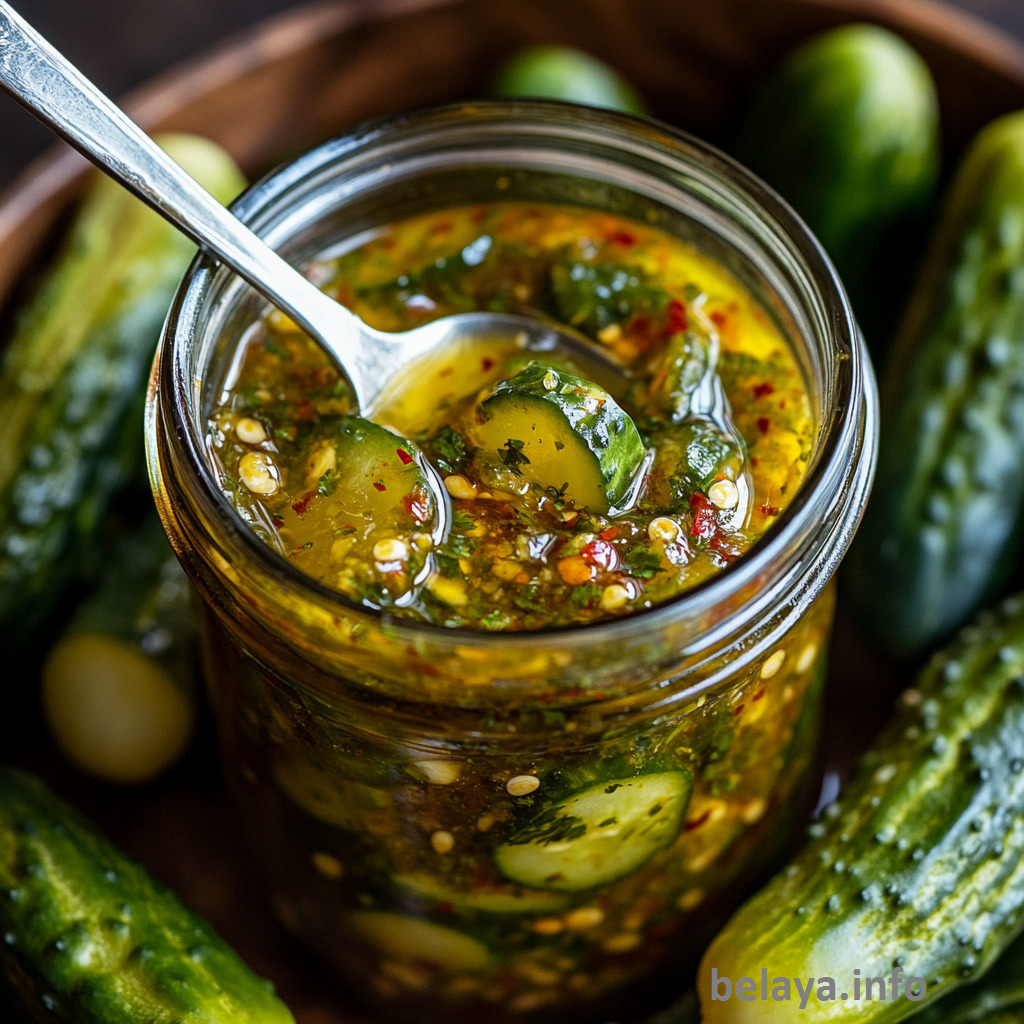
Expert Tips:
Choose high-quality pickles: Use naturally fermented dill pickles (not just vinegar-based) for more complex, probiotic-rich flavor. The brine from fermented pickles also carries deeper umami and acidity.
Roast or blister some peppers for depth: While fresh chilies give a sharp, grassy heat, lightly roasting a few of them adds smoky undertones and softens their bite—ideal if you want a rounder, richer sauce.
Balance acidity with intention: Vinegar and pickle brine are both acidic. If the result is too sharp, stir in just a small amount of honey, agave, or sugar to soften the edges without masking the flavor.
Use oil for emulsification and body: Blending in oil while the mixture is warm helps emulsify the sauce, creating a smooth, silky texture that clings to food. Olive oil adds richness, while neutral oil lets the pickle flavor shine.
Blend in stages for texture control: For a chunkier sauce, pulse briefly; for a smoother, pourable finish, blend thoroughly and strain through a fine mesh sieve if needed.
Test and adjust heat levels gradually: Different peppers vary in spice, so start with less and blend in more raw or roasted chilies after tasting. You can also add a pinch of cayenne or chili flakes post-blend for an extra kick.
Let it rest before using: Refrigerate the finished hot sauce for at least 12–24 hours before the first use. This gives the flavors time to meld, mellow, and deepen for a more unified, balanced sauce.

Dill Pickle Hot Sauce
Ingredients:
1 cup chopped dill pickles, including a bit of the pickle juice
3 to 4 fresh jalapeño or serrano peppers, chopped (leave seeds in for extra heat)
¼ cup white vinegar or dill pickle brine (your choice for tanginess)
1 tablespoon fresh dill, finely chopped (or 1 teaspoon dried dill as a substitute)
1 clove garlic, minced
¼ teaspoon onion powder
¼ teaspoon salt, or more to taste
½ teaspoon sugar or honey (optional, to balance acidity)
2 tablespoons olive oil or other neutral cooking oil
Instructions:
Sauté the aromatics:
Heat the oil in a small saucepan over medium heat. Add the minced garlic and chopped jalapeños (or serranos) and cook for 2–3 minutes, stirring occasionally, until softened and fragrant.
Add the flavor base:
Stir in the chopped pickles along with some of their juice, vinegar or brine, dill, onion powder, salt, and optional sugar or honey. Bring the mixture to a gentle simmer.
Simmer to develop flavor:
Let the mixture simmer for 5–7 minutes, allowing the ingredients to break down and the flavors to meld.
Cool and blend:
Remove from heat and let cool for a few minutes. Carefully transfer the mixture to a blender or food processor and blend until completely smooth. Add extra pickle juice or water if you prefer a thinner sauce.
Adjust heat and seasoning:
Taste and adjust as needed—add more salt, a touch of honey, or another raw chili for extra heat. A pinch of cayenne can also boost the spice level.
Bottle and store:
Pour the hot sauce into a clean glass jar or hot sauce bottle. Seal and refrigerate for up to 3 weeks. Shake before each use.

Important Notes When Making Dill Pickle Hot Sauce:
Acidity control is crucial: Since both vinegar and pickle brine are acidic, using too much of either can overpower the sauce. Always taste as you go and use a sweetener (like honey or sugar) to soften sharp edges if the acidity becomes too dominant.
Pickle variety makes a difference: The flavor of your sauce will be heavily influenced by the type of pickles used. Choose dill pickles without added sugar or artificial flavorings for a cleaner, more herbaceous result.
Pepper selection affects heat and flavor: Jalapeños tend to be milder with a grassy tone, while serranos offer sharper heat. Keep the seeds in for spicier results, but remove them for a smoother, milder sauce.
Don’t overcook the garlic or peppers: Sauté just until fragrant—overcooking can lead to bitterness or a “burnt” undertone that masks the brightness of the pickles and herbs.
Oil enhances texture and flavor delivery: Adding oil not only smooths the sauce but also helps the heat and aromatics linger on the palate. Use it wisely—too much can make the sauce greasy, too little and it may feel flat.
Cooling before blending protects flavor: Blending while hot can cause harsh vapors from the chilies and vinegar. Allowing the mixture to cool slightly preserves both flavor clarity and safety during blending.
Refrigeration is key to flavor fusion: Like most sauces, this one improves after resting. Chilling it for a day helps the sharpness mellow and the dill, garlic, and chili to harmonize into a cohesive flavor.
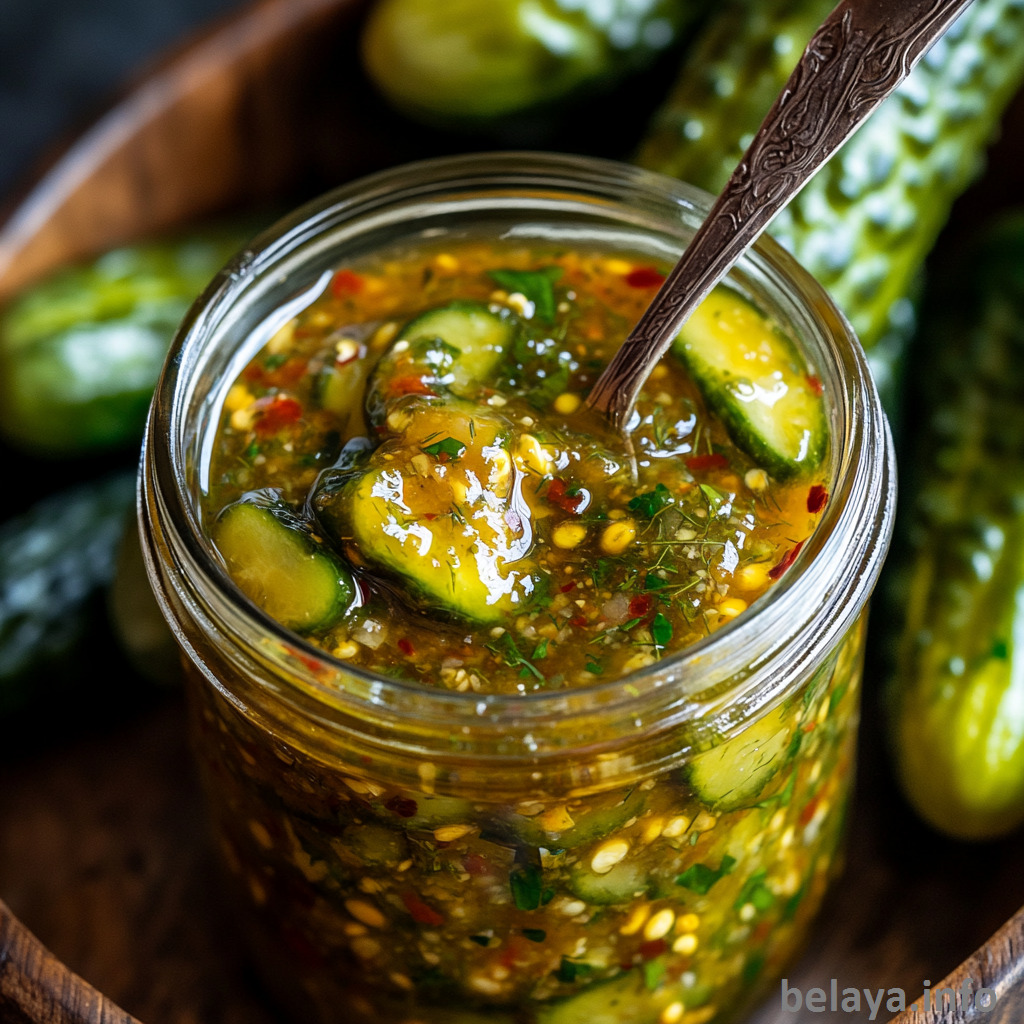
How To Enjoy Dill Pickle Hot Sauce After Cooking
Let It Rest for Maximum Flavor
While you can enjoy the sauce immediately, it’s best after resting in the refrigerator for 12–24 hours. This gives the brine, garlic, dill, and chilies time to fully infuse and mellow, creating a more balanced and complex flavor.
Taste and Adjust Before Serving
Before using, give it a quick taste. The cold may dull some flavors, so adjust as needed—add a splash of pickle juice for brightness, a pinch of sugar to soften acidity, or an extra dash of chili flakes for heat. Shake well before each use.
Pair with the Right Foods
This sauce shines when used as:
- A zesty drizzle on sandwiches, burgers, or hot dogs
- A spicy, tangy dip for fries, nuggets, or fried pickles
- A finishing touch on eggs, avocado toast, or breakfast burritos
- A bold topper for grilled meats, seafood, or roasted veggies
- A punchy addition to salad dressings, marinades, or deviled eggs
Its unique briny heat plays well with anything rich, creamy, or fried.
Store Smart
Keep the sauce in a clean, airtight glass bottle or jar in the refrigerator. It will stay fresh for up to 3 weeks. Always use a clean spoon or pour directly to preserve shelf life and flavor purity.
Use as a Creative Flavor Booster
Try mixing a spoonful into:
- Cream cheese or sour cream for a tangy dipping sauce
- Mayo or aioli for an elevated sandwich spread
- Bloody Marys or picklebacks for a bold cocktail twist
- Tartar sauce or ranch for a briny, spicy upgrade
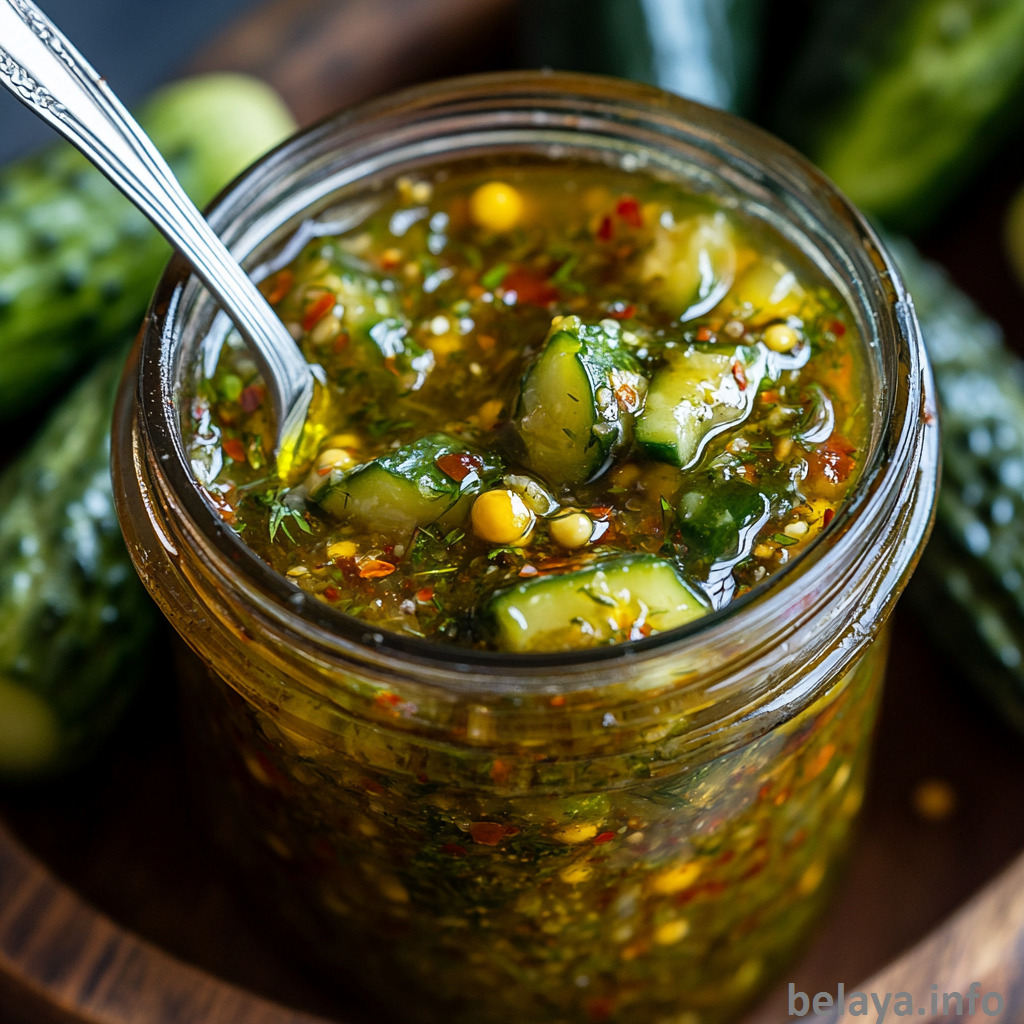
Nutrition Information
For 1 tablespoon (about 15g) of Dill Pickle Hot Sauce, assuming olive oil is used and sugar is included:
Calories: 32 kcal | Total Fat: 2.6 g | Saturated Fat: 0.4 g | Monounsaturated Fat: 1.8 g | Polyunsaturated Fat: 0.3 g | Cholesterol: 0 mg | Sodium: 130–160 mg (depending on pickles and added salt) | Total Carbohydrates: 1.8 g | Dietary Fiber: 0.3 g | Sugars: 0.9 g | Protein: 0.2 g

Frequently Asked Questions:
Can I use store-bought pickle juice instead of vinegar or homemade brine?
Yes. Store-bought pickle juice works well—especially from high-quality dill pickles. Just ensure it’s not too sweet or loaded with artificial ingredients, as that can affect the final flavor balance of the sauce.
How spicy is this hot sauce, and how can I control the heat?
The heat level depends on the type and quantity of peppers used. Jalapeños are milder, while serranos are spicier. Keep the seeds in for more heat, or remove them to tone it down. For a real kick, add a raw chili or a pinch of cayenne at the end.
Can I make this hot sauce shelf-stable?
Not as-is. This recipe is intended for refrigeration and short-term use. To make it shelf-stable, you’d need to adjust acidity levels (pH below 4.6), use proper sterilization, and possibly follow canning protocols. Otherwise, store in the fridge for up to 3 weeks.
What can I use this hot sauce on besides sandwiches?
It’s incredibly versatile. Try it on eggs, tacos, burgers, roasted vegetables, grilled meats, in potato salad, or mixed into dressings and marinades. It also works well in Bloody Marys or as a dip component.
My sauce separated in the fridge—is that normal?
Yes, separation is natural. Since this sauce doesn’t contain stabilizers or emulsifiers, the oil may rise to the top. Just give it a good shake before each use to restore consistency.
Should I use fresh or jarred pickles for the best flavor?
Use high-quality dill pickles, preferably refrigerated and naturally fermented. These typically have cleaner ingredients and more complex flavor than shelf-stable versions. Avoid sweet or bread-and-butter pickles, as they will drastically change the flavor profile.
Do I need to remove seeds from the peppers?
Not necessarily. Leaving the seeds in will increase the heat and preserve a more robust flavor. If you prefer a milder sauce or smoother texture, you can remove them before chopping. You can also strain the final blend for an ultra-smooth finish.
Can I skip cooking and just blend everything raw?
Technically yes, but cooking deepens the flavor. Sautéing the garlic and peppers helps mellow their sharpness and allows the oil to carry flavor better. Simmering the mix before blending also helps unify the briny, spicy, and aromatic components.
What’s the best way to blend the mixture safely?
Let the mixture cool slightly before blending. If using a standard blender, never blend piping hot liquids—steam pressure can cause the lid to pop. Blend in small batches if needed, and always cover the lid with a towel for safety.
How do I thicken or thin the hot sauce to my liking?
Adjust during the blending stage. For a thinner sauce, add more pickle brine, water, or vinegar gradually. For a thicker, spoonable texture, use less liquid and blend longer. You can also add a small amount of mustard or cooked vegetables (like roasted garlic or onion) for body.